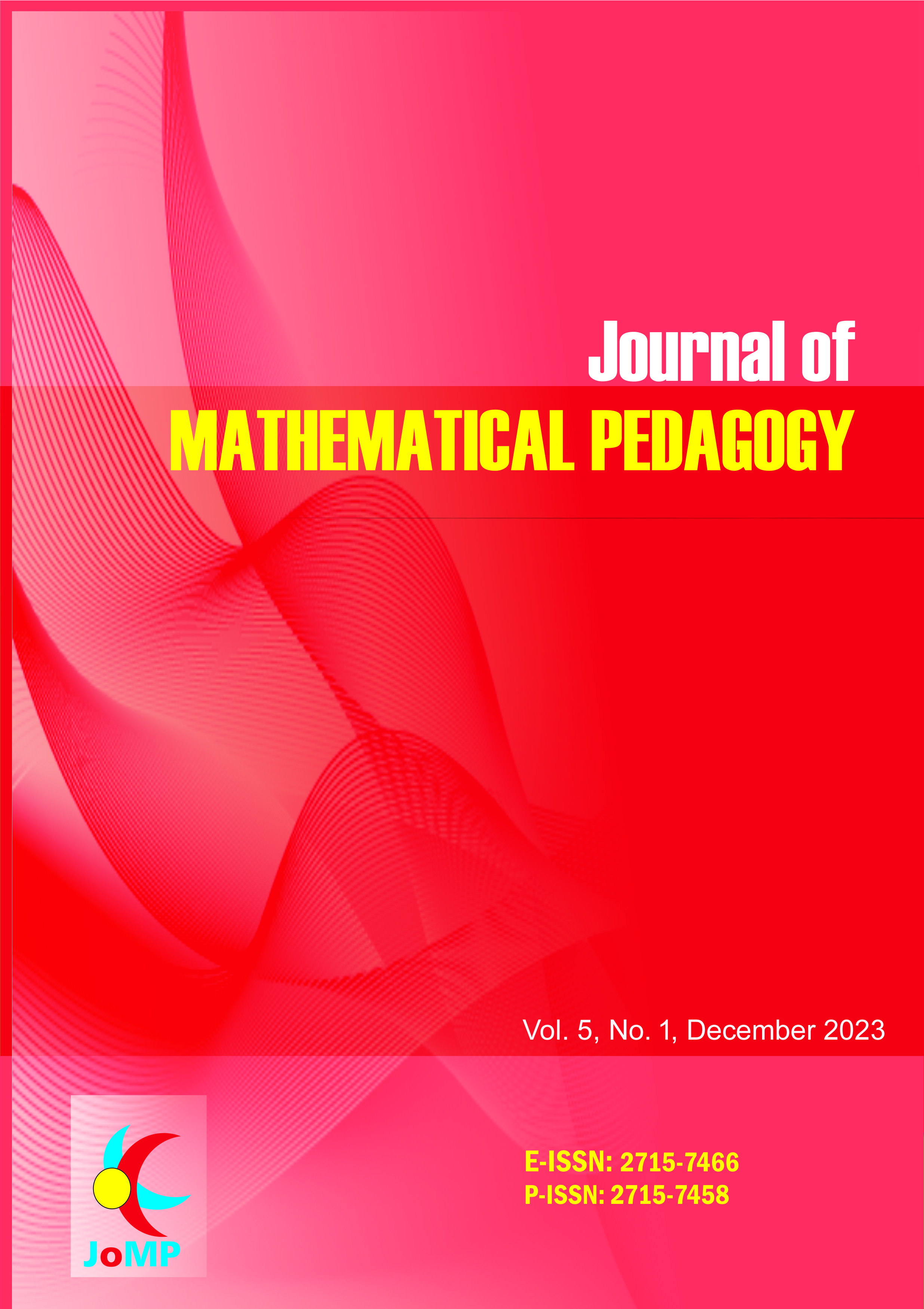Students Activities in Learning Pythagoras Theorems Using Desmos Application
DOI:
https://doi.org/10.26740/jomp.v5n1.p1-14Keywords:
learning activity, pythagoras theorem, desmosAbstract
This study aims to describe the creative thinking skills of students in solving problems related to the Pythagorean Theorem using Desmos application. This descriptive research involved 3 Junior High School students in grade 9 in Sidoarjo (Indonesia) who each had high, medium, and low ability backgrounds. The task in the form of questions consisted of two questions asking students to create two different triangles. The results of the analysis showed that high-ability students were able to create two different triangles if they were given sides 3 and 4 in the form of a right triangle and an equilateral triangle. Students with moderate and low abilities were able to draw right triangles with Desmos, but had difficulty drawing isosceles triangles. Both of them drew an isosceles triangle, but with side lengths of 3, 4, and 6. These results illustrate that the use of Desmos helps students' ideas in finding answers in drawing triangles, but the basic abilities that students have can be an obstacle in completing the given tasks.
References
Fadlilah, C., Karim, K., & Hartono, S. (2021). Creative Thinking Ability of Visual-Dominant and Visual-Kinesthetic Students in Solving Statistics Problems. Journal of Mathematical Pedagogy (JoMP), 2(2), 40-51.
Gisbtarani, J. I., & Rianasari, V. F. (2021). Analysis of Creative Thinking Abilities of Prospective Mathematics Teachers in Solving and Posing Quadrilateral Open-ended Problems. IndoMath: Indonesia Mathematics Education, 4(1), 26. https://doi.org/10.30738/indomath.v4i1.8050
Hadar, L. L., & Tirosh, M. (2019). Creative thinking in mathematics curriculum: An analytic framework. Thinking Skills and Creativity, 33, 100585. https://doi.org/10.1016/j.tsc.2019.100585
OECD. (2023). PISA 2022 Results (Volume I): The State of Learning and Equity in Education. OECD. https://doi.org/10.1787/53f23881-en
Qadri, L., Ikhsan, M., & Yusrizal, Y. (2019). Mathematical Creative Thinking Ability for Students Through REACT Strategies. International Journal for Educational and Vocational Studies, 1(1), 58. https://doi.org/10.29103/ijevs.v1i1.1483
Samura, A. O., Darhim, D., Juandi, D., Said, A. M., & Malaka, M. (2021). Improving the Creative Thinking Ability of Junior High School Students Through GeoGebra Assisted Learning Community in Mathematics. International Journal of Interactive Mobile Technologies (iJIM), 15(22), 84. https://doi.org/10.3991/ijim.v15i22.24797
Yuniarti, A. P., Pramudya, I., & Slamet, I. (2021). Analysis of Mathematical Creative Thinking Skill in Student with Kinesthetic Learning Style. International Journal of Multicultural and Multireligious Understanding, 8(4), 128. https://doi.org/10.18415/ijmmu.v8i4.2451
 Abstract views: 397
,
Abstract views: 397
, PDF Downloads: 405
PDF Downloads: 405





